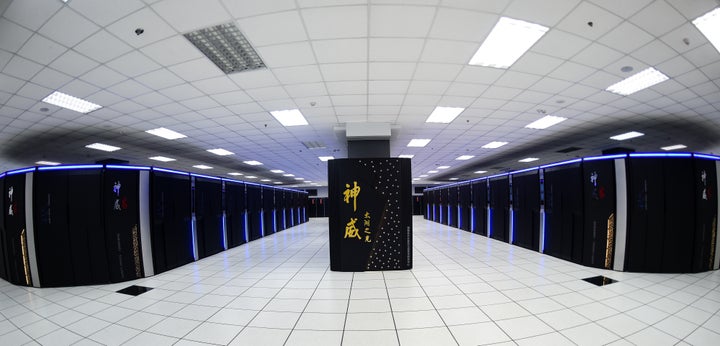
This is the Sunway TaihuLight and while it's not exactly 'Deep Thought' it is in fact the world's most powerful supercomputer.
The government owned computer is installed at the National Supercomputing Centre in Wuxi, China.
It is capable of running at a staggering 93 petaflops which means that at peak it can perform around 93,000 trillion calculations per second.
The Met Office's supercomputer which predicts the weather cost £97 million and can perform around 16,000 trillion calculations per second.
To try and put that into some perspective here's some basic maths.
The Sony PlayStation 4 console has a graphics processing unit that can achieve 1.84 teraflops.

There are 1000 teraflops in a petaflop which means that to even have a hope of achieving the same level of computing power you would need to gather up 50,499 PlayStation 4s.
That's a lot of games consoles.
According to Top500 Sunway TaihuLight uses a staggering 15,371KW of electricity which in case you're wondering is enough to power a small village.
Made with over 10 million locally-made processing cores, and running on an operating system called Linux the computer's completion marks the first time that China has overtaken the US when it comes to supercomputers.
China now has 167 in the top 500 while the US has just 165.
What does a supercomputer actually do?
So now you've got your very own Top500 supercomputer what can you do with it?
Well for starters we're going to burst some bubbles. You can't play Grand Theft Auto, or Minesweeper.
In fact what you can do is extremely limited, and that's because to even have a hope of harnessing the sheer computing power on offer you need very complex, very powerful software.
Supercomputers are incredibly good at number crunching, so where they excel is in taking huge almost unimaginable swathes of data e.g. decades of weather models, and then translating them into the 7-day forecasts that we see on the morning news.
They're also incredibly good at space exploration, making fantastically complex calculations about space ship trajectories etc.
